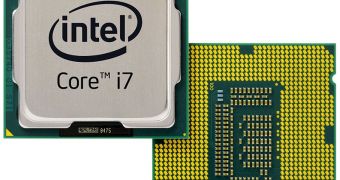Intel's Haswell central processing unit collection has been detailed and priced recently, which has been a welcome occurrence, but there is one tiny bit of info that could cause problems.
There will be a whole bunch of new technologies in the chips, but there is one that will cause headaches to anyone who has today's PSUs.
Basically, the Haswell CPUs can enter low-power states, which require a minimum load of 0.05A on the 12V2 rail.
It allows the chips to work on little power whenever possible, bringing energy consumption down by a lot.
Unfortunately, most power supplies simply cannot provide such a low current, as pointed out by The Tech Report website.
All is made more complicated by how older PSUs comply with ATX12V v2.3 design guidelines only, leading to a minimum load of 0.5A on the CPU power rail.
The internal feedback loop/protection can be less sophisticated because of that.
In layman terms, PCs that try to power systems based on Haswell CPUs with older PSUs, or cheap ones, will become unstable when the CPUs enter the low-power states.
The only workaround is for the states to be disabled in the BIOS, which defeats much of the purpose of buying the CPUs in the first place.
Everything is made more troublesome by the fact that most power supplies don't report minimum currents supported by the 12V rail. It makes it almost impossible to figure out which PSUs are compatible with Haswell Core I CPUs and which aren't.
Motherboard makers may very well resort to pre-setting C6/C7 low-power states to “Disabled” by default. If owners are certain their PSU can handle them, they may change the setting themselves.
Intel hasn't, so far, commented on the news story, but hardware makers have started to publish lists of PSUs compatible with the low-power states.

 14 DAY TRIAL //
14 DAY TRIAL //